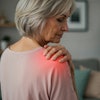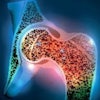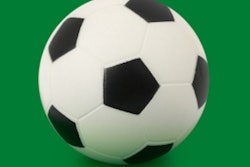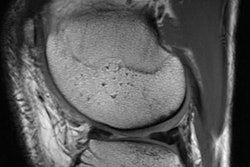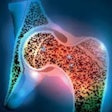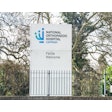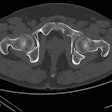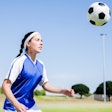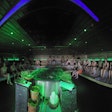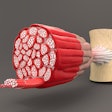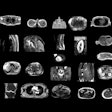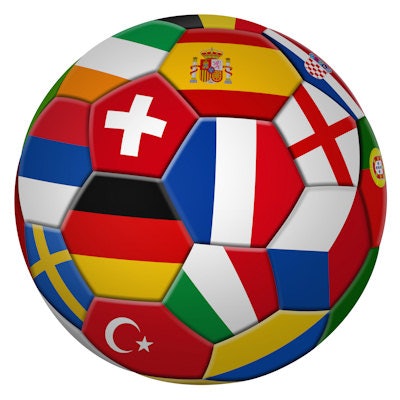
Try to match the imaging modality with the specific injury of a young football player -- that's one of the practical tips given by doctors from a sports medicine clinic in Madrid with nine years of experience dealing with injured children and adolescents.
At the Hospital Sanitas de La Moraleja, staff organize football injuries of growing athletes in two main groups: collision injuries, which are acute and sometimes may include major head trauma and thoracoabdominal trauma; and overuse or single use injuries, characterized by the sudden onset of clinical symptoms.
In the clinic, around 81% of injuries affect the lower extremities, particularly the hip and groin. Around 9.3% of injuries are to the upper extremities, while spinal injuries account for 7%. Another 0.3% of injuries affect the thoracoabdominal wall, and another 0.3% are cranial injuries, according to Dr. Sergio Serrano Belmar, lead author of an e-poster presented at RSNA 2017.
"It is very difficult and sometimes impossible to obtain a proper medical history and collect details on the exact timing of the injury," he noted. "In diagnosing pediatric football players, the radiologist must offer fast and reasonable solutions, which sometimes can be very stressful."
| Most useful imaging studies | ||||
| Injuries during kicking | Injuries during tackling | Injuries during collision | Imaging techniques | |
| Bone | + | + | + | X-ray, CT, MRI |
| Muscle and soft tissue | + | + | + | MRI and ultrasound |
| Cartilage | + | + | +/- | MRI |
| Spine and head | +/- | + | CT, MRI | |
Imaging can identify early maturing compared with slowly or normal maturing individuals, and late maturing players tend to have a higher incidence of osteochondrosis, whereas early maturing players have a higher incidence of tendinopathy, groin strains, and repeat injuries, Serrano Belmar and colleagues said.
The radiologist's role is to indicate any abnormality or misalignment depicted on the relevant imaging examination, they continued. Appropriate use of imaging can help to prevent further injuries. Also, anatomical studies of the growing skeleton and assessment of asymmetry using clinical tests of the limbs such as limb symmetry index can be important.
Return-to-play criteria using MRI is another vital area. For instance, some of the most common injuries in young athletes are muscle injuries, the hamstring complex being the most common one.
"Our experience correlates with the recent UEFA Elite Club Injury Study, where higher muscle injury correlates well with the days of lay-off (or rest)," the authors wrote. "In our experience, grade II muscle injuries are associated with seven days of lay-off, which can increase to 14 days if the myotendinous junction and the intramuscular septum are affected."
Popularity of football
Football remains the most popular sport in Spain and worldwide, and in Europe there are many football camps and academies that offer high-class training under the guidance of the elite clubs, the researchers said. In addition to mastering the necessary skills to become a professional football player, children and adolescents are taught the main concepts of football philosophy: It is a high endurance, competitive team sport that involves considerable physical contact.
In these camps, young players learn how to run like an athlete, changing directions as quickly as possible, and to develop muscle stamina to last the entire game. They are also taught to kick the ball hard, perform high jumps and land safely, and use parts of the body that are unprotected to approach the ball.
"It is very important to consider the main units of the growing skeleton because it is undergoing big physiological changes and circumstances that can hinder the accurate diagnosis," Serrano Belmar and colleagues stated. Bone and cartilage unit composition, presence of secondary growth centers (growth plates), presence of other growth centers (apophysis), and increased density of diaphysis and augmented porosity of the epiphysis and metaphysis are other factors to consider.
Muscle and ligament composition must be considered too. There is less muscle and tendon flexibility during growth spurts, and younger children have a relatively low muscle-bone growth ratio, which accounts for less muscle mass in comparison with adult players, they pointed out. In addition, the individual's hip-knee-ankle alignment, anterior cruciate ligament size, knee joint laxity, and the hamstring-to-quadriceps ratio are anatomical issues to bear in mind.
During a growth spurt, there is increased bone formation and less muscle formation, leading to a greater risk of apophyseal avulsion fracture, the authors wrote. It is also important to know the timing of fusion of the apophysis to the main body. For example, the apophysis of the calcaneus fuses between the ages of 12 and 15, and Sever's disease (calcaneal apophysitis) cannot occur in children beyond this age range.
Correct classification of football injuries is essential, they said. In the lower extremities, apophyseal avulsion fractures and muscle injuries tend to occur during the phase of kicking the ball, while most chondral injuries happen during the tackling phase. In the upper extremities, an avulsion fracture may occur during tackling, and in the thoracoabdominal wall, blunt thoracic trauma can occur during a collision. It's vital to use the classification that suits the clinician's needs, they added. At Hospital Sanitas de La Moraleja, they use the Stoller MRI criteria for muscle injuries.
Playing football in a youth academy is a physically demanding and highly competitive environment for which the sports medicine team must be prepared to diagnose and offer fast and efficient solutions for recovery, but the team must also ensure the balanced development of the child, the group concluded.


